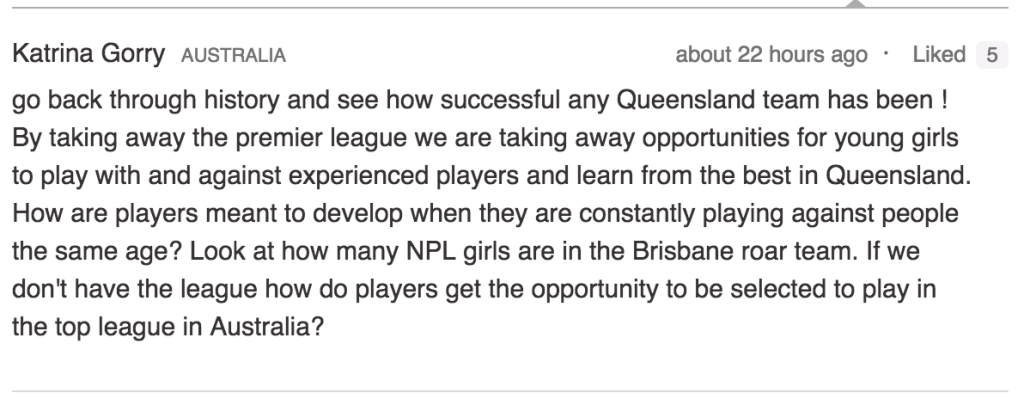The dawning of the WNPL may have come with its fair share of mixed reactions from within the Victorian footballing community, but for all intents and purposes, its inception should bring with it a better standard league.
In theory, the eight licensed clubs should each provide the state with a different zonal elite pathways outlet to the top level, with a stronger focus placed on youth development through the U13, U15 and U18 competitions.
This all of course happens with the end means of providing the players the best opportunity possible to go onto to play first-team football, by providing not only the skill-set, but the mental framework to succeed against players of W-League – and international – pedigree. Those experiences in the often rough-and-tumble top-flight in itself is designed to prepare youngsters for the rigours of elite-level football such as the aforementioned national competition.
So while perhaps a bit out of our jurisdiction, the current plight of the WNPL in Queensland is a concerning one for the women’s game in general. Within the new framework for their 2015 competition, their senior competition will consist largely of players between the age of 16-20, with only five spots made available for over-aged players.
The response to this decision has been largely negative from within Queensland footballing circles, with the general concern being that a larger gap is being unnecessarily wedged between the W-League & Brisbane Roar and what is essentially its feeder competition.
Victoria has set its blueprint for what it sees as the way forward in regards to youth progression, by better structuring their junior competitions and providing more opportunities for Australian talent by capping the amount of foreigners per squad but still retaining the integrity of a strong second tier competition.
Daresay, none of Victoria’s WPL clubs of the season gone by would’ve stood to the standards set by the Queensland WNPL and we’ve still managed to produce more than 20 players – 10 under the age of 19 – for the W-League in 2015, with even more set to be confirmed by Melbourne City in the next fortnight. The fact that these youngsters are able to step toe-to-toe with players of the ilk of Lisa De Vanna, Melissa Barbieri and Amy Jackson was immeasurable for their progression as footballers as they got the chance to test themselves against the elite week-in, week-out.
Football Queensland on the other hand have pushed the agenda of youth progression in a much less subtle manner, with the scope not only to hurt the progression of the 16-20’s by lowering the level of competition, but also hurting the over-aged players, the majority of whom now find themselves without a top-flight club.
SIGN > Petition to reinstate WNPL Queensland Senior competition for 2016
Digressing ever so slightly, the discussion of player payments in women’s amateur football has always been a delicate subject matter, but as seen with the Matildas pay dispute, there’s a genuine concern about the longevity of a career in the sport. Retirement in the mid-20’s is a trend we’ve seen far too often in women’s football because of the precarious balance of player output versus reward. For those ’20 somethings’ set to be affected by Football Queensland’s WNPL restructuring, it may prove to be the straw that breaks the camels back, pushed away from the sport that they’ve given so much too.
For those players in that mid-20’s bracket, a move interstate may prove fruitful should they feel the need to further their footballing careers, but for the unfortunate few stuck in the purgatory age of 21-23 and undergoing tertiary study, a move may not be feasible despite still being considered relatively young in the eyes of footballing public.
When considering the talent in the WPL within that age bracket – Rachel Alonso, Caitlin Friend, Enza Barilla and Alex Gummer to name a few – it’s a disheartening look into what could be lost from our game. Even for the mid-20’s, giving up full-time jobs to shift interstate is hardly a feasible option like it is in the men’s game, where semi-professional players can make $40,000 a season for their troubles.
So while the intentions of Football Queensland may have been in the right place in regards to youth development and future-proofing the talent pool for the states future, it’s hard to see how they’ve put their due-diligence into their decision, based purely on the outpour from those affected by the decision. In fact, a petition to help overturn the governing bodies proposed rule changes for 2016 is up to 1,850 signatures, and you can help make an impact by also signing via the link below.

